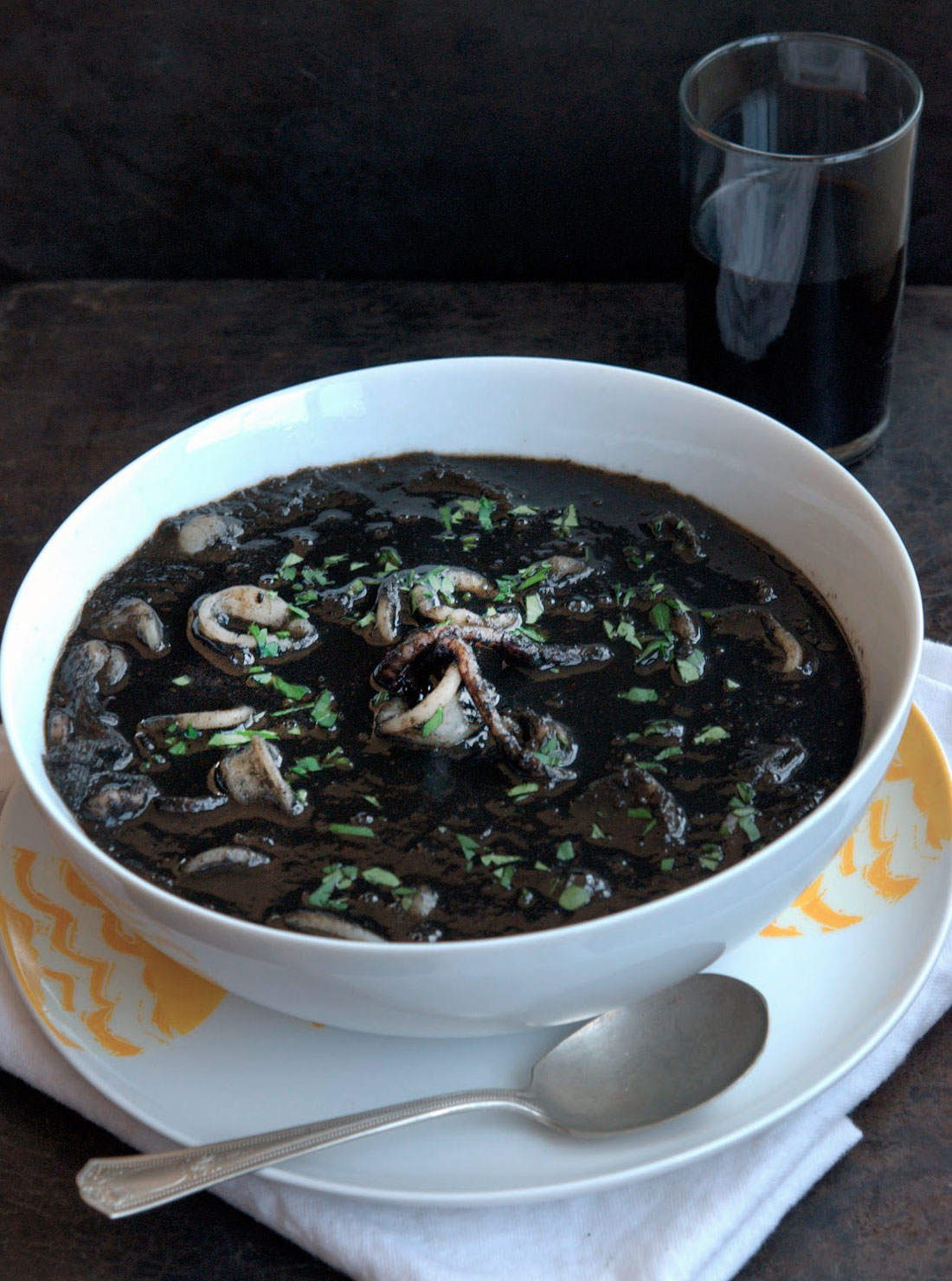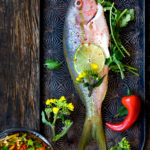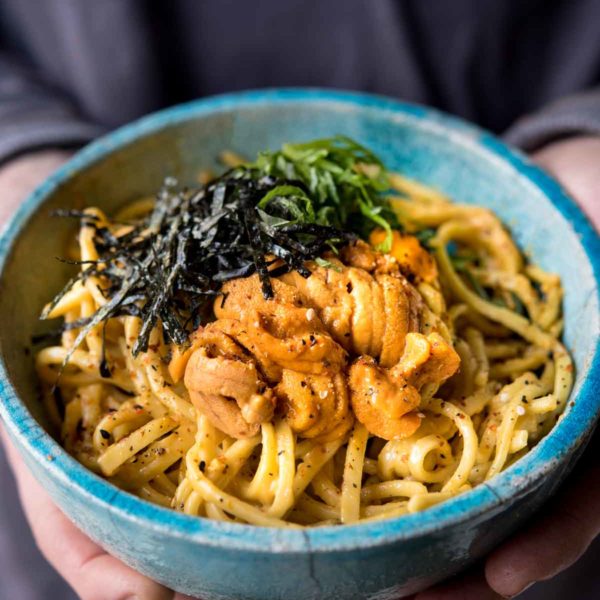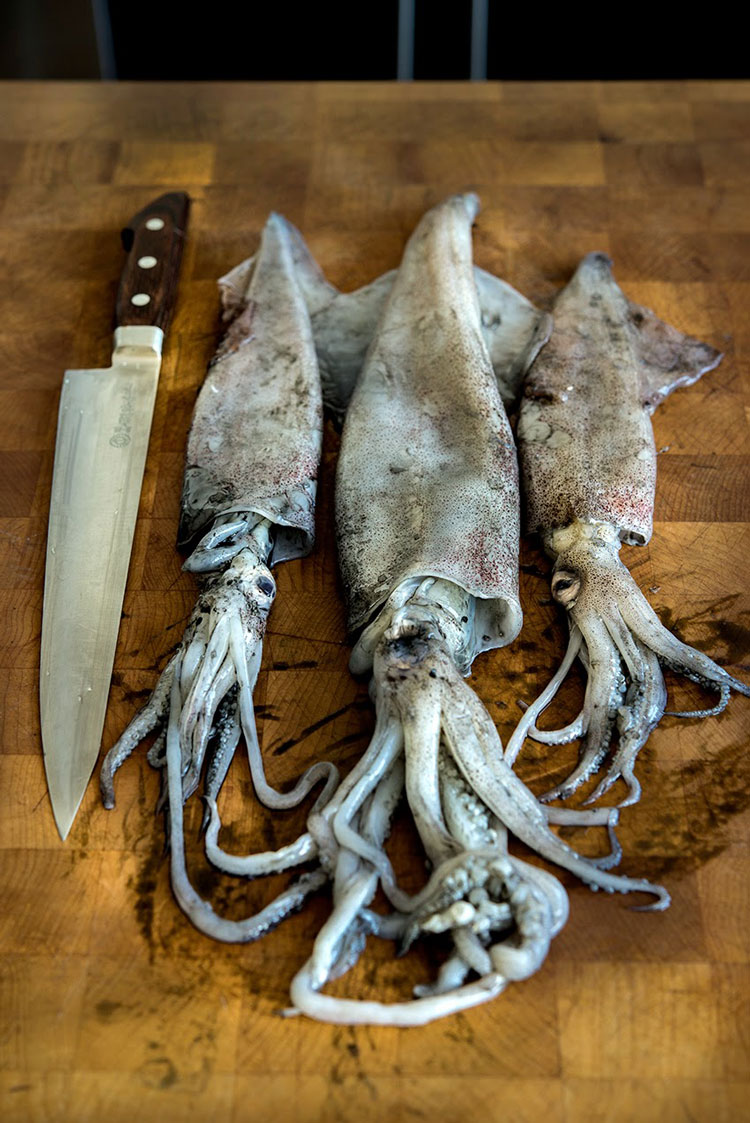
Hard to describe the flavor of squid ink, other than to say it tastes like the sea. Recently came across the term merroir. Similar to terroir — the essence of land or place — merrior can be thought of as the essence of the sea. I’ve heard this term used with oysters, which may be the quintessential example of merroir. Depending on the waters from which they are harvested, oysters take on distinct qualities. East coast oysters tend to be stronger, more briny, more salty; whereas, West coast oysters tend to be more mild, more sweet. Squid ink has those same briny, salty qualities that come only from the sea or its merroir, the waters in which these eight-legged, funny-looking creatures have been swimming around.
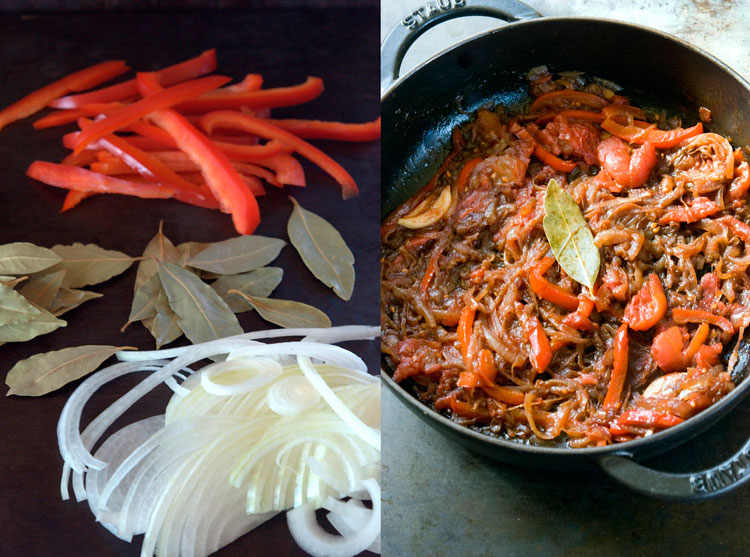
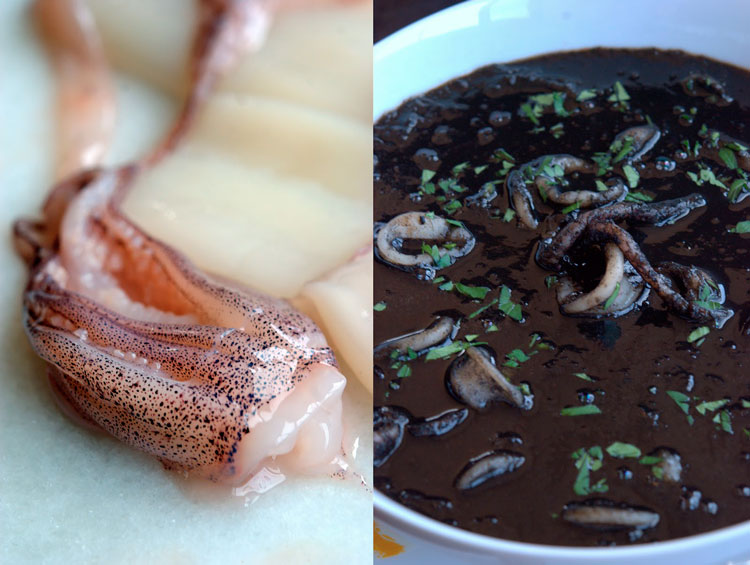
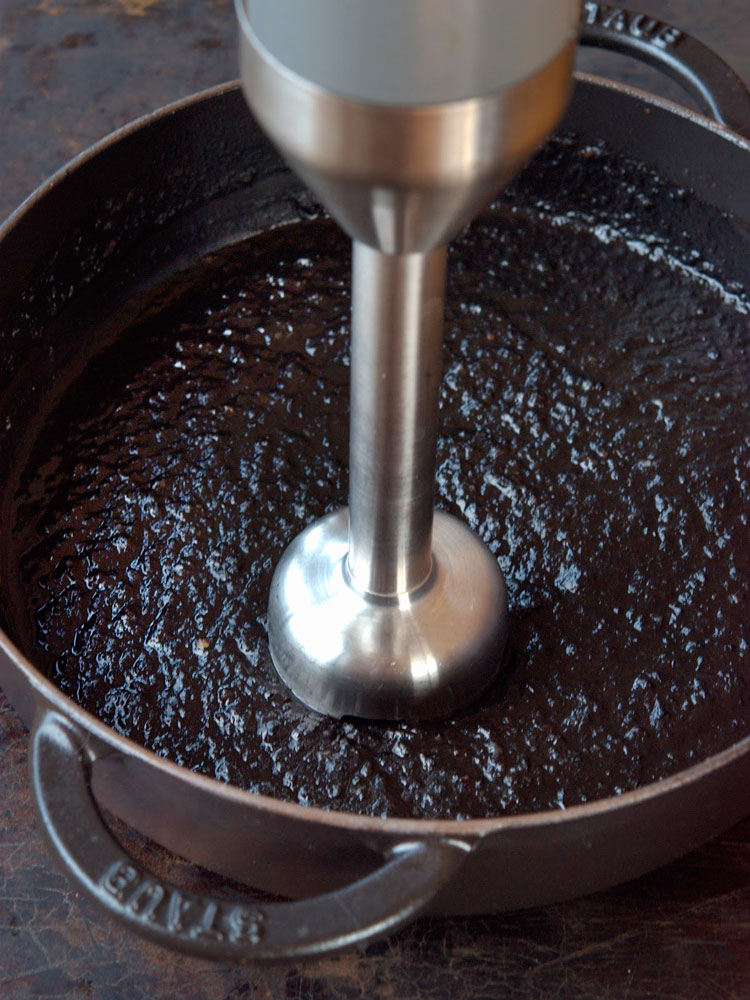
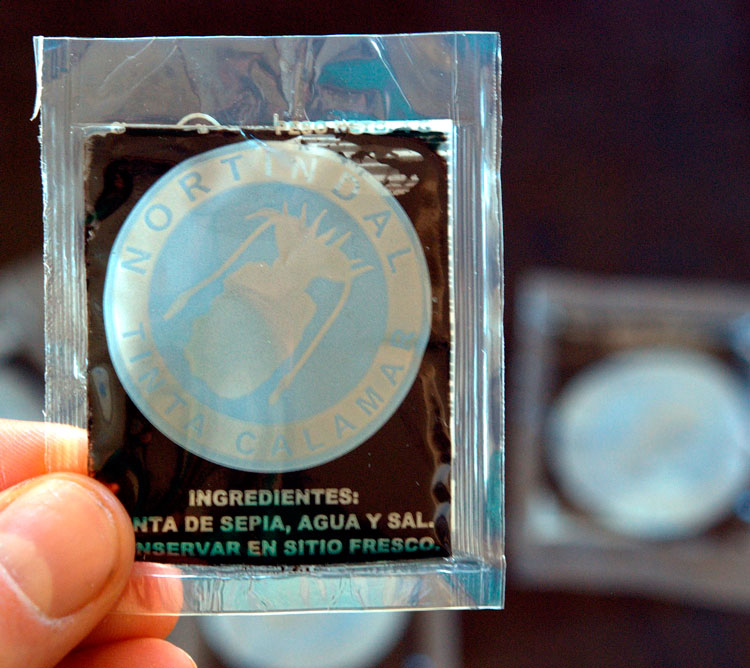
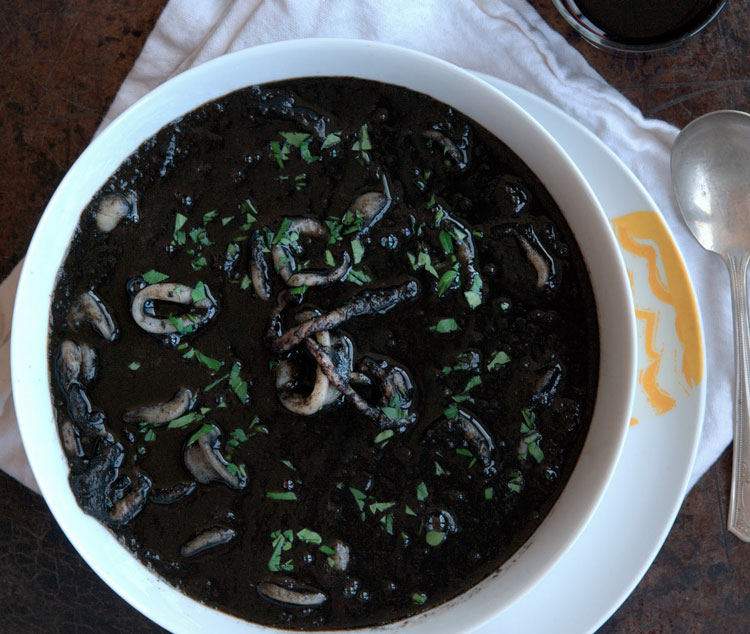
Squid in its own Ink
Adapted from Jose Andres’s A Taste of Spain in America
3 tablespoons extra virgin olive oil
2 small or 1 large onion, sliced thinly
1 large garlic clove, peeled
1 bay leaf
1/2 red pepper, sliced thinly
1/4 cup red wine|3 small tomatoes, seeds removed, chopped (can substitute canned tomatoes)
1 cup water (or fish stock)
3 teaspoons squid ink (4 packets)
1 lb squid, cleaned and cut into ~1/2 inch rings
Sea salt to taste
Parsley, finely chopped for garnish
Heat the olive oil in a wide shallow pan (used a 2 1/2 quart braising pan) over medium heat. Add the onions, clove of garlic, bay leaf, and red peppers, and cook, stirring occasionally until the onions caramelize, about 30 minutes. If the onions start to get too brown, add a tablespoon or two of cold water. Add the wine and cook until reduced in half. Add the tomatoes and cook until the tomatoes turn a deep brown and the water cooks out. Add the water (or fish stock).
Remove from the heat, take out the bay leaf, and blend with an immersion blender or food processor until smooth.
Return the sauce to the heat and add the squid ink. Bring to a simmer and add the squid (body and tentacles) and simmer for another 15 to 20 minutes until the squid are soft. Season with salt to taste. Garnish with chopped parsley.
Enjoy over pasta, a side of rice, or simply on its own!
